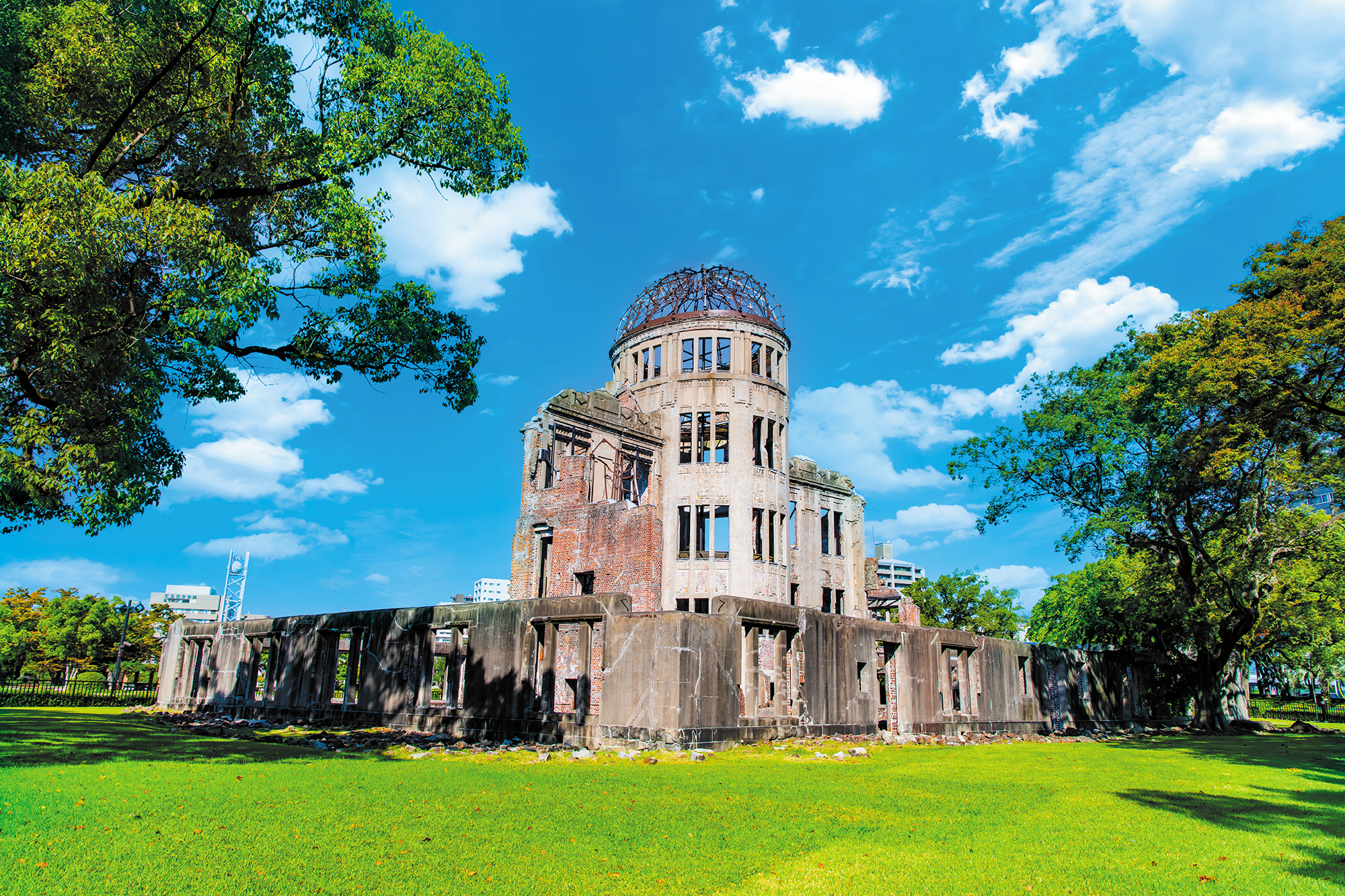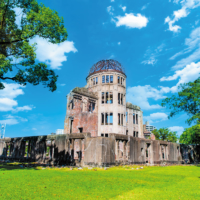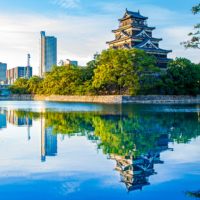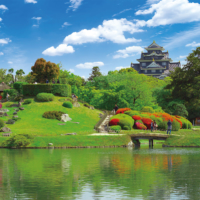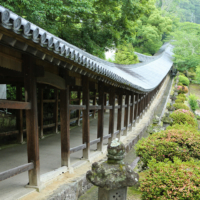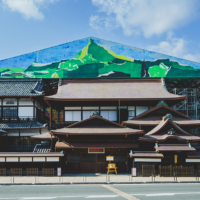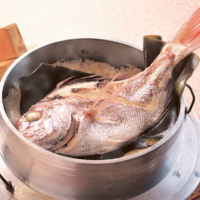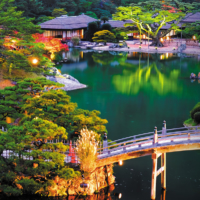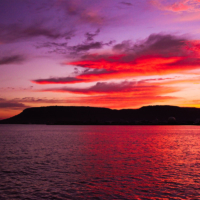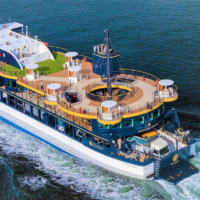The area surrounding the Seto Inland Sea, Japan’s largest inland body of water, constitutes the Setouchi area, represented by the cities of Hiroshima, where the G7 Summit will be held, Okayama, Matsuyama and Takamatsu. Spanning the prefectures of Hiroshima, Okayama, Ehime and Kagawa, respectively, all have their own unique appeal in terms of history, scenic sites and gourmet dining.
Symbol of resilience and hope for future peace
At the western end of Hiroshima Prefecture lies Hiroshima, which among other nicknames is known as the city of rivers for the six that flow through it. Although the city has a full range of commercial and cultural facilities, beautiful nature is close by. As an international city of peace and culture, Hiroshima plays an important role in conveying a message of peace to the world after being targeted with the first atomic bomb ever used in warfare.
Among places of interest, the first is the Atomic Bomb Dome, a war relic that is permanently kept in ruins as a poignant reminder of the destructive effects of atomic warfare and as a plea for the abolition of nuclear weapons and lasting peace.
The second, Hiroshima Castle, is a 20- or 30-minute walk from the Atomic Bomb Dome. The castle was built in 1589 by Mori Terumoto, grandson of the great warrior Mori Motonari. The main keep was destroyed in the atomic bombing in 1945, but was restored in 1958. Today, the castle is a popular spot for enjoying colorful autumn foliage.
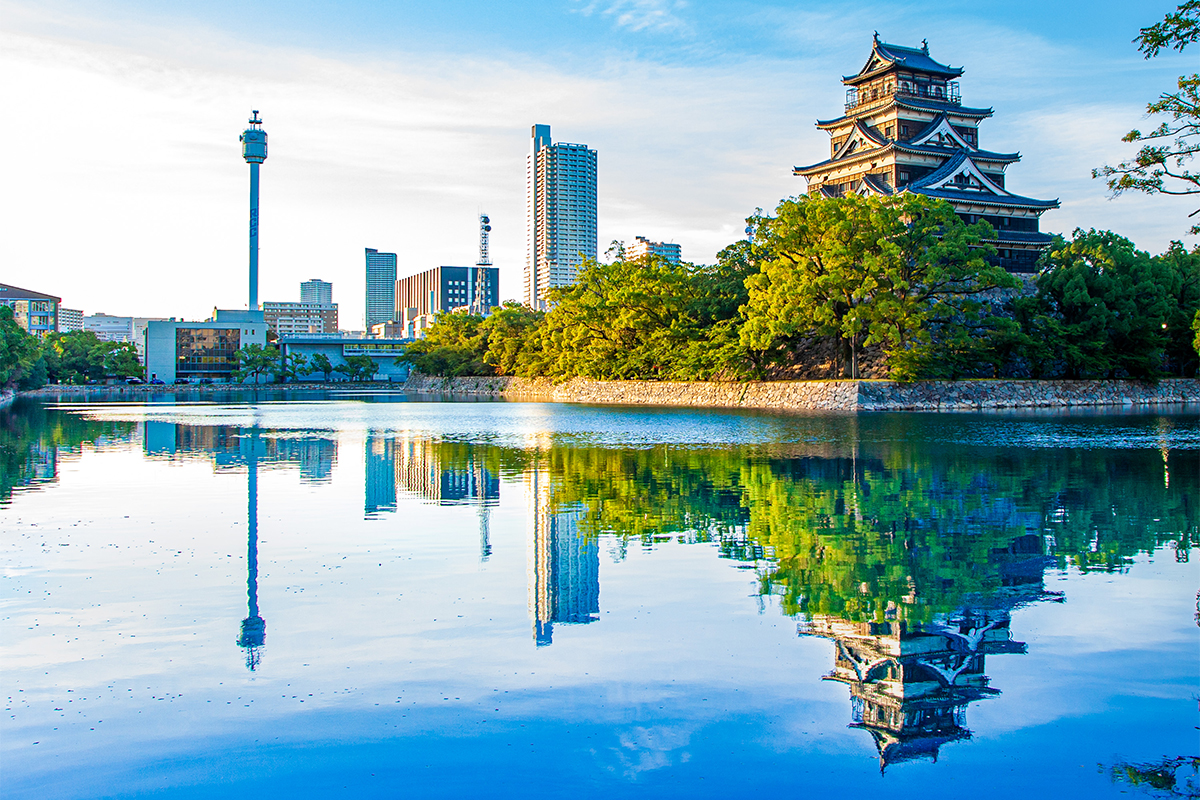
On the culinary front, okonomiyaki, a savory Japanese meat and vegetables pancake, is a treat that visitors shouldn’t miss. At Okonomimura, diners can sample offerings from over 20 street vendor-style stores under one roof. Originally, there were 50 or so okonomiyaki vendors clustered around the Shintenchi district in central Hiroshima in the postwar years. However, the concept was moved indoors to this new facility to create a “village” of vendors. Today, it’s a popular spot for visitors and residents alike.
A blend of history, art and delicious cuisine
About 35 minutes from Hiroshima by shinkansen is Okayama, the capital of Okayama Prefecture.
Okayama is a hub city for the Chugoku and Shikoku regions, thanks to the area’s well-developed transport network. Two scenic spots, Okayama Castle and the traditional Okayama Korakuen Garden, a three-star attraction in the Michelin Green Guide Japan, stand in the heart of the city.

Fresh from a major renovation in 2022, Okayama Castle, a three-level, six-story structure, is distinctive for its unusual irregular pentagon shape and black exterior. The main keep, destroyed in 1945 during the war and later reconstructed, offers a fine view of the verdant Okayama Korakuen Garden from its top floor. The garden, built in 1700 by then-head of the Ikeda family Ikeda Tsunamasa, is filled with seasonal blooms and, together with the castle, is illuminated on spring, summer and fall evenings.
Okayama is also known for the famous children’s tale Momotaro, or Peach Boy. Kibitsu Jinja shrine, associated with the Momotaro tale, contains related artifacts and sites. The shrine is also worth seeing for the 360-meter-long gallery.
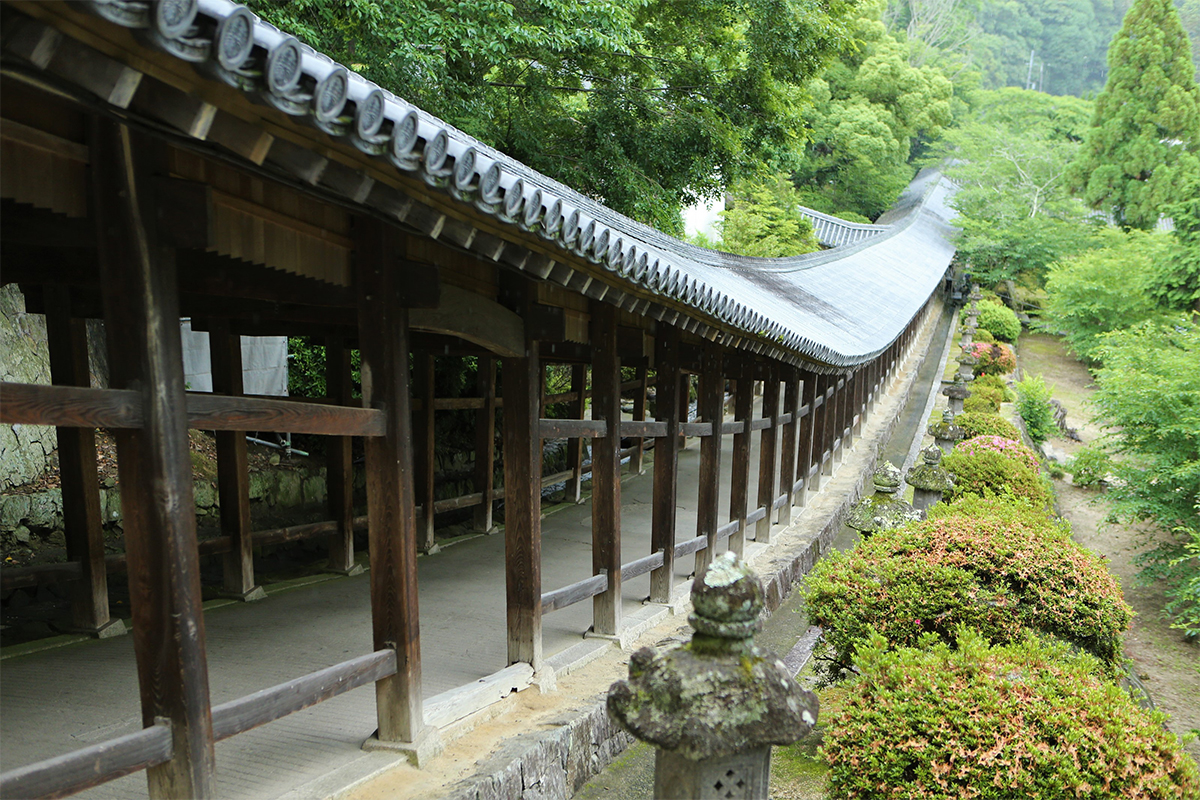
The city offers visitors an interesting mix of art, history, local crafts and food specialties. Inujima island, known for its art installations, is also the home of the Inujima Seirensho Art Museum. A former copper refinery, the structure is an Industrial Modernization Heritage Site that was repurposed as an art museum in 2008. Inujima also attracts visitors who enjoy camping, swimming and sea kayaking in a beautiful natural setting.
Last, Okayama is famous especially for white peaches, muscat grapes and other delicious fruits to savor at various times of the year.
Okayama actively reaches out to Muslim visitors and offers many halal options.
Ancient hot spring contrasts with modernity
Matsuyama, which sits on the northwestern edge of Shikoku across the Seto Inland Sea from Hiroshima and Okayama, is blessed with a dry, mild climate year-round. The city offers the best of both worlds, with urban conveniences readily available and rural tranquility not far away.
Matsuyama’s Dogo hot spring resort is known as Japan’s oldest hot spring, dating back 3,000 years. Although the Dogo Onsen Honkan building is currently being renovated, visitors can still enjoy a bath there. Hot spring lovers can visit Dogo Onsen Annex Asuka-no-Yu, an auxiliary building where hot springs bathing is combined with traditional local crafts and cutting-edge art to showcase artistic creations, culture and history. An art installation by photographer and film director Mika Ninagawa, featuring a dazzling display of 230 photos of flowers, will be exhibited there until February 2024.
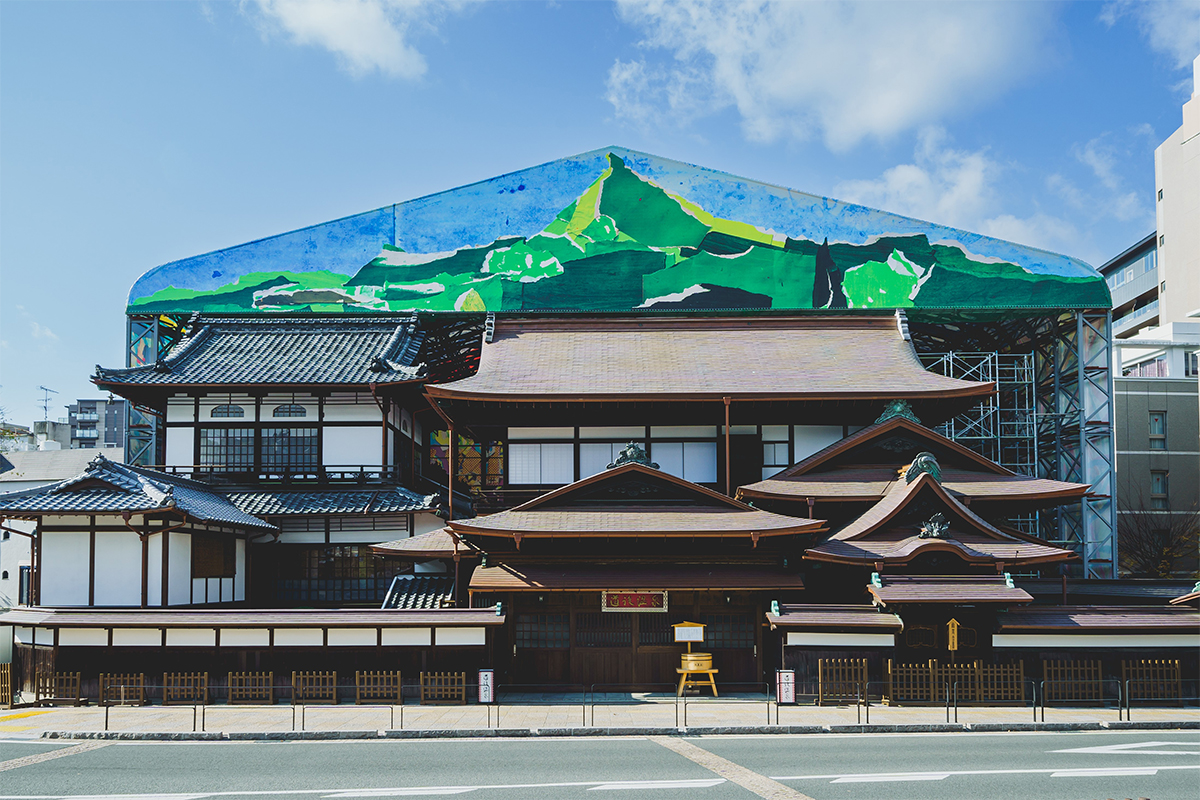
High above the city stands Matsuyama Castle, which is listed among Japan’s top 100 castles and features as a top-ranked
TripAdvisor destination. Construction began in 1603, and the main keep dates from 1852. The grounds include 21 buildings designated Important Cultural Properties. This spot offers wonderful night views of the city and is a popular destination for cherry blossom viewing.
As for food, Matsuyama is Japan’s top producer of farmed tai (sea bream), and there are plenty of dishes featuring this delicacy on offer. One popular variation is sea bream on rice, a whole fish cooked together with rice and seasonings in a clay pot. Sea bream with somen, or thin wheat noodles, is another popular dish eaten on celebratory occasions.
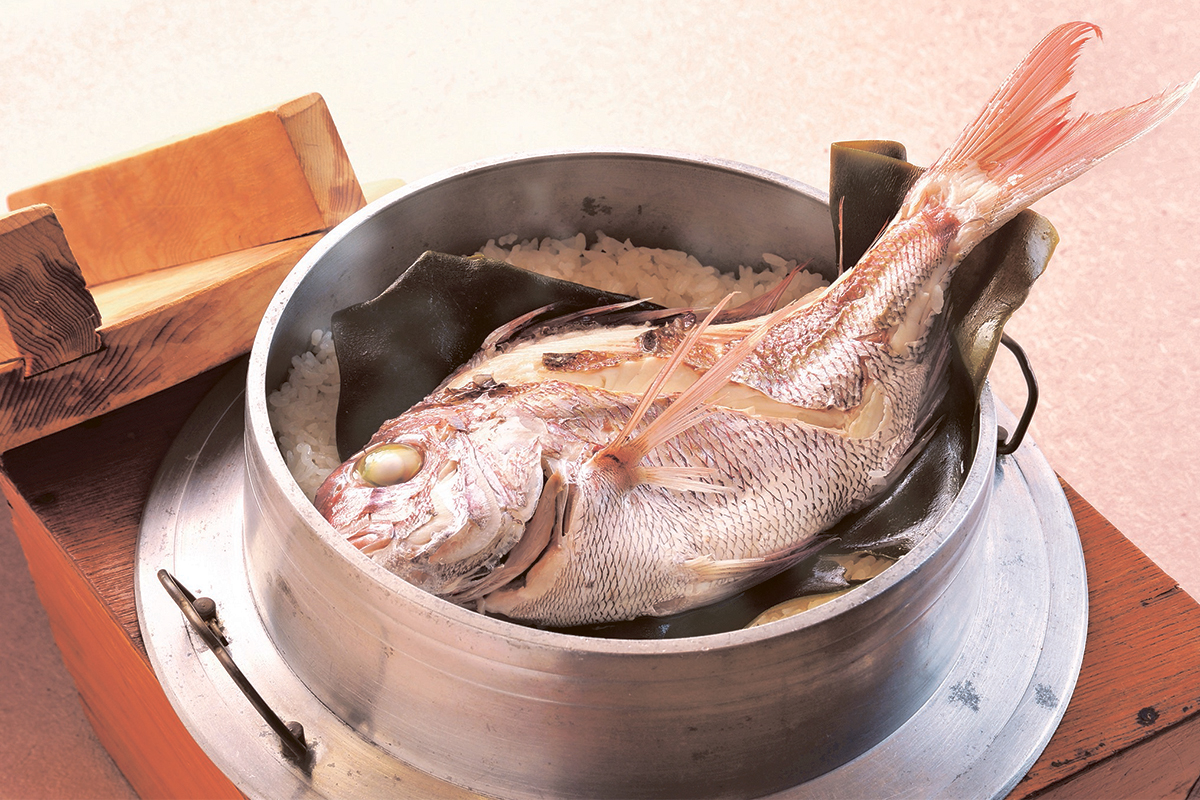
Pleasant mix of sea, towns, islands, mountains
At the northeast end of Shikoku is Takamatsu, Kagawa Prefecture. Although small, Kagawa boasts sea, islands, towns and mountains in a compact area. Takamatsu Port, a departure point for ferries bound for islands in the Seto Inland Sea, is close to JR Takamatsu Station, which makes it just a quick trip from the city center to a favorite island.
One of the highlights of Takamatsu is Ritsurin Garden, completed in 1745 by the local feudal lord. Designated an area of outstanding beauty, Ritsurin Garden is the largest stroll garden of its kind and rates three stars in the Michelin Green Guide Japan. The traditional garden’s artfully arranged ponds, hillocks, greenery and historical structures delight visitors throughout the year.
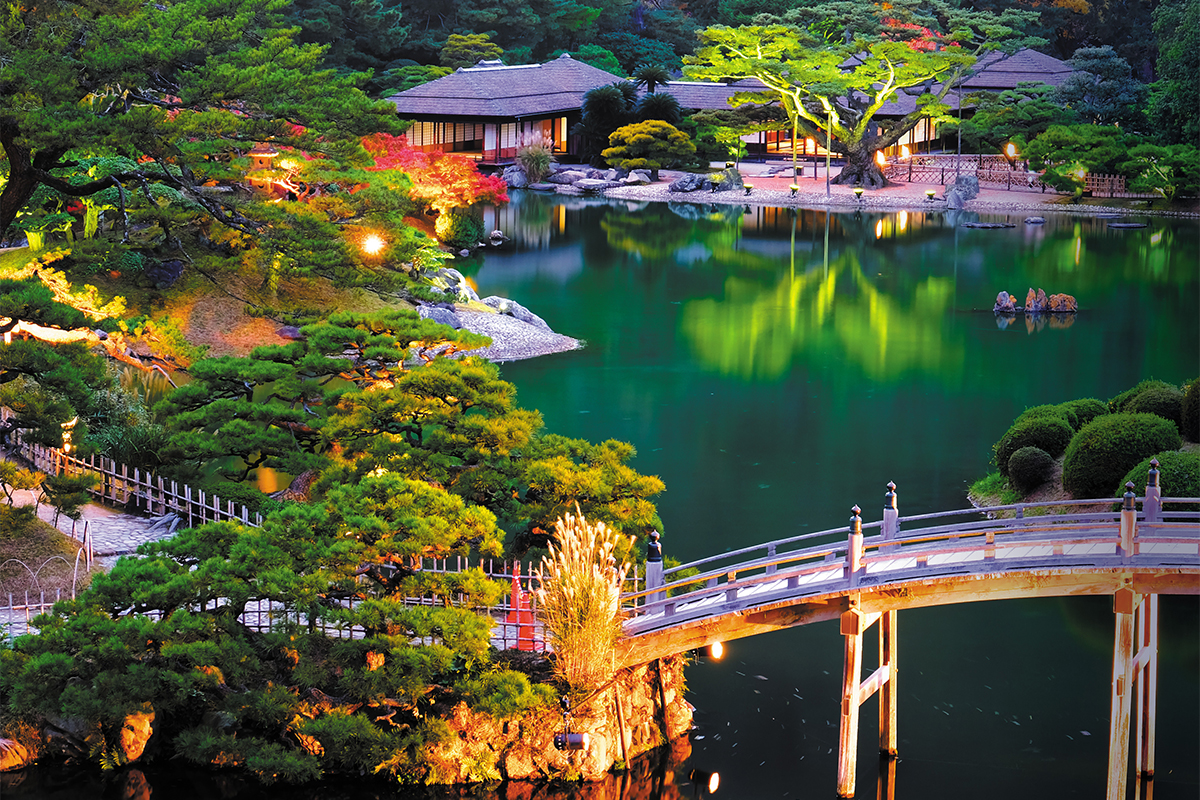
Tamamo Park is another recommended sight for enjoying Takamatsu’s historic atmosphere. The former site of Takamatsu Castle, the park is surrounded by seawater moats, and visitors can board small boats to feed the fish therein. The park contains turrets designated as Important Cultural Properties, the Hiunkaku Villa, a traditional garden and a recently restored imposing castle gate.
Nearby is the Yashima Plateau, where a pivotal battle between rival samurai clans played out in the late 12th century. It was also one of the three sites to be designated as Japan’s first national parks. The placid, island-dotted waters of the Seto Inland Sea and the entire city of Takamatsu are visible from the heights of Yashima.
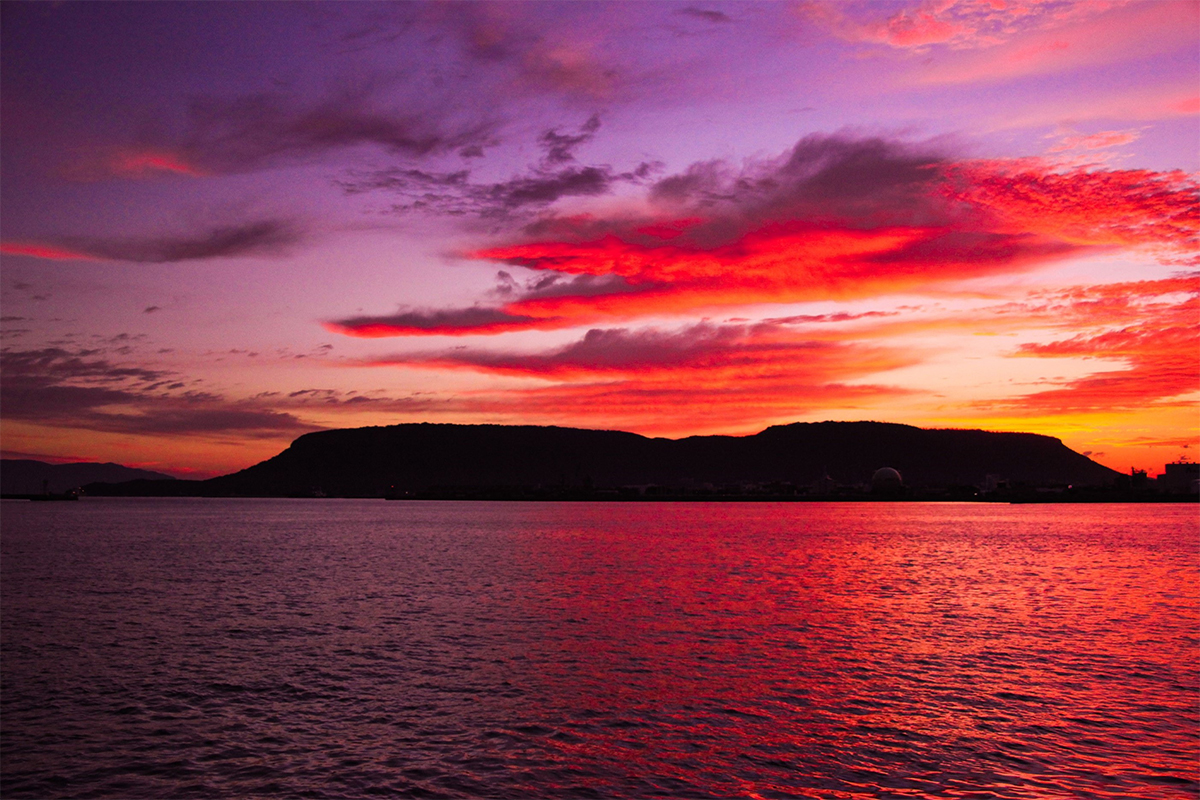
Other nearby sights include Yashima Temple, the 84th on the Shikoku 88 Temple Pilgrimage route also known as the Shikoku Henro, the mountaintop New Yashima Aquarium and the Yashima Mountaintop Facillity (aka Yashimaru), which opened in 2022.
Takamatsu is also a venue for the Setouchi Triennale (Setouchi International Art Festival). As a contemporary art event, it draws visitors from all over the world, who can enjoy the artworks displayed around the city and on the surrounding islands.
Transport options
The Setouchi Area Pass excursion ticket offers a convenient way of traveling around the four cities. Good for seven days, it can be used on shinkansen, express and local trains, the Okayama Electric Tramway, local buses, the Meipuru-pu sightseeing bus and the numerous ferries operating on the Seto Inland Sea.
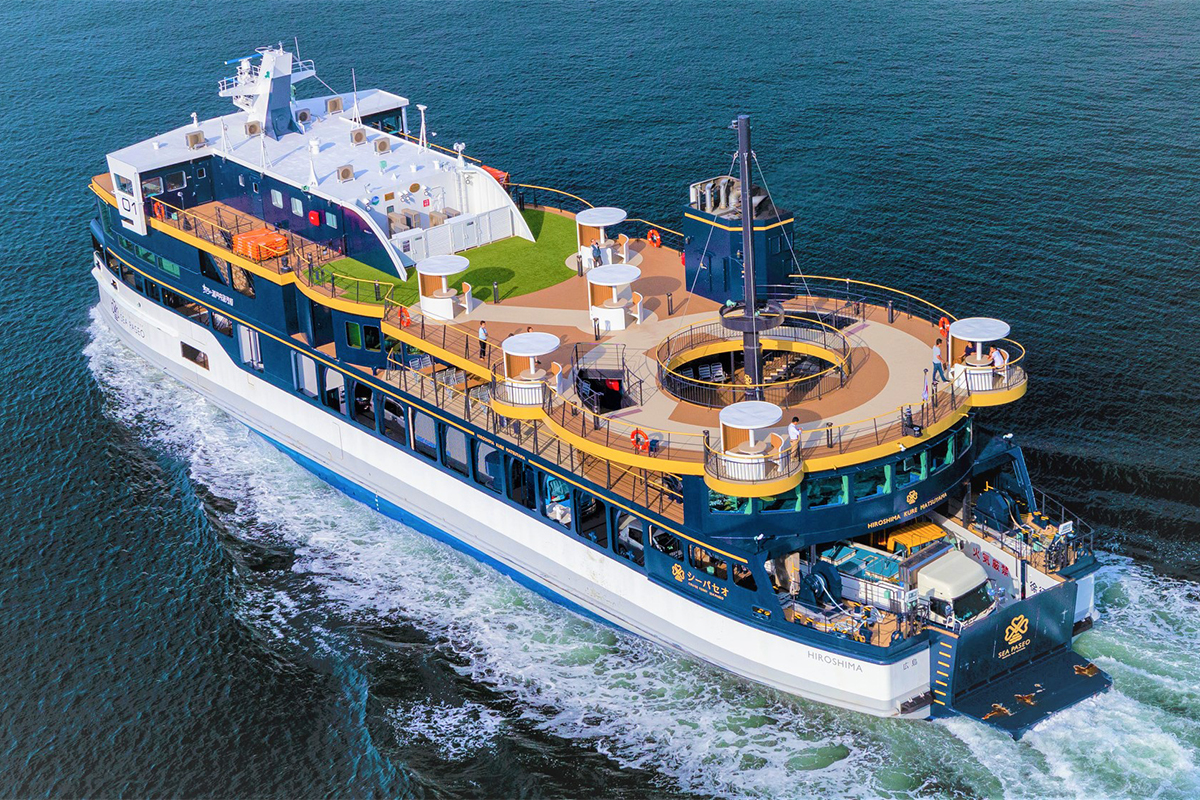
Sea routes are a great way of traveling between Hiroshima and Matsuyama and enjoying scenic vistas at the same time. Travelers can choose either a 70-minute trip by high-speed ferry or a more leisurely 160-minute journey aboard the Sea Paseo luxury cruise vessel. Foreign visitors can buy tickets at a 30% discount. We highly recommend this short trip by sea between the two cities.
Atomic Bomb Dome
URL: https://hpmmuseum.jp/?lang=eng
Address: Otemachi 1-10, Naka-ku, Hiroshima, Hiroshima Pref.
Access: Genbaku Dome-mae stop on the Hiroden streetcar
Hiroshima Castle
URL: https://www.rijo-castle.jp/
Address: Motomachi 21-1, Naka-ku, Hiroshima, Hiroshima Pref.
Access: 15-min. walk from the Kamiyacho-higashi stop on the Hiroden streetcar or 25-min. walk from Hiroshima Station
Okonomimura
URL: http://www.okonomimura.jp/foreign/english.html
Address: Shintenchi 5-13, Naka-ku, Hiroshima, Hiroshima Pref.
Access: 3-min. walk from the Hatchobori stop on the Hiroden streetcar
Okayama Korakuen Garden
URL: https://okayama-korakuen.jp/section/english/
Address: Korakuen 1-5, Kita-ku, Okayama, Okayama Pref.
Access: Korakuen-mae stop, Okaden bus bound for Fujiwara Danchi
Kibitsu Jinja shrine
URL: https://www.kibitujinja.com/en/
Address: Kibitsu 931, Kita-ku, Okayama, Okayama Pref.
Access: 10-min. walk from Kibitsu Station
Dogo Onsen Annex Asuka-no-Yu
URL: https://dogo.jp/en/asuka.php
Address: Dogo-yunomachi 19-22, Matsuyama, Ehime Pref.
Access: 2-min. walk from Iyotetsu Dogo Onsen Station
Ritsurin Garden
URL: https://www.my-kagawa.jp/static/en/ritsurin/
Address: Ritsurin 1-20-16, Takamatsu, Kagawa Pref.
Access: 3-min. walk from JR Ritsurinkoen-Kitaguchi Station
Sea Paseo
URL: https://setonaikaikisen.co.jp/newferry/
This page is sponsored by Project executive committee, association of mayors of Hiroshima, Okayama, Matsuyama and Takamatsu.



